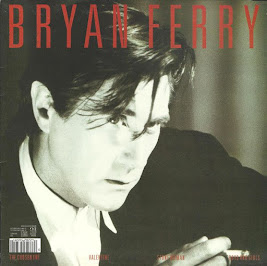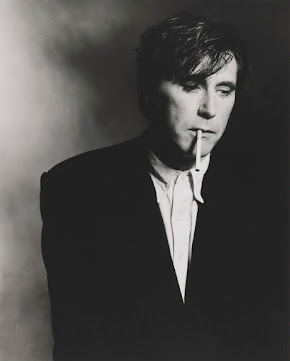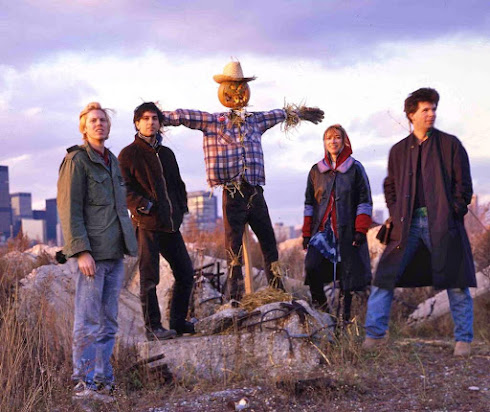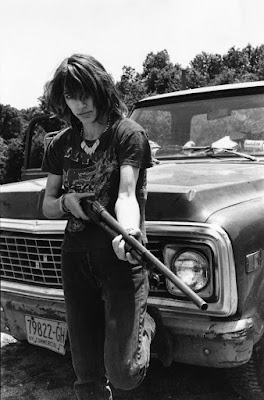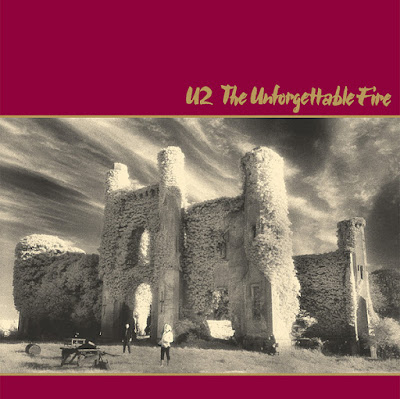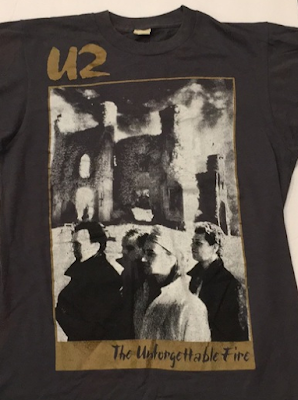 |
| Son Volt in 1995, photographed by Bob Berg |
It's been a hard couple of months. Hell, it's been a hard couple years now- I'm sure we can all relate to that. For me, it's been pretty hard to find that "creative spark" or the drive to use my brain at all really, after I clock out from the long day of using it for eight hours straight. I know I've been fairly inconsistent with my writing for a while now, but I'm also the type of person who can't force it or fake it... it has to be natural, you know? But I think last night's dream was my sign to finally come back to it again.
I had a dream I was at a concert, specifically a festival, where a childhood favorite band, Son Volt, was playing. Their unrealistically short set finished, and everyone but me walked away to see whoever was next at another stage. The band lingered on the stage, packing up their own instruments (as if they were too underground for roadies), and I approached to give them kudos for such a great set. They said they'd play one more, just for me, and my response was asking them to play their 1995 release Trace, front to back. Lead singer and principal song-writer Jay Farrar (who I'd admittedly never seen in photos much before... so not sure how my brain manifested his image) chuckled and asked if I'd settle for "Tear Stained Eye", to which I humbly obliged.
All-in-all, a very out-of-left-field sort of dream. I haven't listed to Son Volt consistently for a long time now, although they were a childhood staple, with their Trace CD a regular in my Dad's six-disc changer player. I mostly find myself listening to them during the most nostalgic time of year, summer, because didn't it just feel like those summers lasted forever when you were little? In any case, I felt the need to share a little bit about Son Volt's debut record with the world, despite their massive success of course, because I'm sure there's still many young and old who've never listened to them.
Alternative country at it's finest, Trace is weathered, classic country meets 90's alternative, fuzzed-out guitars, and pure Americana lyrics. Hailing from Belleville, Illinois, Son Volt know exactly what it's like growing up in a small, Midwestern town with nothing to do but drive. Opening with "Windfall", an upbeat, soothing track, blessing you with its chorus, "may the wind take your troubles away"- this song could always make me feel better as a child, and still can to this day. Driving is something I've used as an escape and a de-stressor for as long as I've known how to do it. The lyrics in this song really capture the feeling of bliss I get from just getting in the car and driving far away from whatever is causing me pain back home. There's just something about driving with your windows down, through a rural, woodsy road, with no one for miles that really gives me an unmatched sense of peace. I wonder if any of you feel similarly.
The complete opposite vibe of "Windfall", "Ten Second News" illustrates what it feels like when you're stuck in that stagnant, small town, as opposed to driving away from it. I don't think there's any song that better describes small-town, Midwest America than this one. From the first note, this song is bluesy and purposefully slow-paced, as if you can feel the isolation and sheer boredom of living in there. "It's hard enough, soaking up billboard signs", is an especially relevant line, and makes me think about driving through Bible Belt towns (or even Northern Wisconsin), with their hilarious billboard arrangement of "Jesus Saves" and "Strip Club" signs, back-to-back. There is something uncanny, and even unnerving about spending time in a town like that, speaking from someone who was definitely raised somewhere more suburban. But even having not grown up there, Farrar's lyrics take us there, and can tell us exactly what it was like.
If you're in the mood for more of an angsty rocker, "Drown" has got you. I definitely enjoyed this song while not really understanding its meaning as a little kid. As an adult, having gone through a few romantic relationships- this is a cynical, sarcastic even, comeback from someone dealing with a fickle, impatient partner. At least that's the story the lyrics appear to be telling. "When in doubt, move on, no need to sort it out", is definitely a dig at someone who just leaves when things are getting tough in a relationship, and doesn't take any responsibility for themselves to make it any better. "You're with me now, will be again", makes me think of the fickleness, of a lover that leaves every time there's a disagreement, but can't stand to be alone, so they keep coming back. "If living right is easy, what goes wrong you're causing it", I always took this one to mean, we all cause most of the problems in our life. If we took more time to work on ourselves, instead of blaming it on someone else, we'd probably be a lot happier.
Trace will always be close to my heart. It is a nostalgic but everlasting presence in my life, reminding me to take the long way home every once and a while, just to have more time cruising and away from the real world. There are so many beautiful parts of these small towns we live in, we only need to take the time to pause and really see it. I hope whether you're more of a rocker, or a folk & country lover, that this album will give you that same kind of feeling. Please give it a listen in full, and let me know what you think. Thanks as always for reading, and keep hanging in there. Remember to take care of yourself and, "Let the wind take your troubles away."
 |
| Photo of the night sky I took at a truck stop in rural WI, on one of my many 'getaway' drives, years ago |


